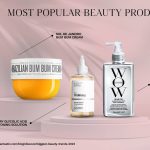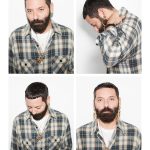At the end of July, Dutch streetwear brand Filling Pieces released a capsule collection in collaboration with German skate brand Dagger. The up and coming German brand works closely with the LGBTQ+ community and tends to reference the glam punk era. With a dose of leopard print, the collection was different from what we are used to from Filling Pieces (known in part for its Low Top shoe, which bridges streetwear and high fashion). The brand launched a capsule collection by Filling Pieces and Yamuna in early August, a multi-disciplinary queer artist dedicated to serving and celebrating the underground LGBTQ+ subculture ballroom community. The result is a drop full of soft, colourful styles.
The current fresh breeze in the air brings food for thought. How about LGBTQ+ representation in streetwear, anyway? According to Filling Pieces marketing manager Alberto Lopez, the streetwear industry still has quite a long way to go in this regard. Especially compared to high-fashion, for example, where greater strides are being made regarding inclusion and representation. The differences are huge, according to Lopez. With the recent fashion collaborations, he hopes to bridge the gap between queer culture and streetwear in order to achieve a more inclusive kind of future.
Filling Pieces is the right place for that, in his experience. Since Filling Pieces was founded by Guillaume Philibert Chin in 2009, brand ethos ‘bridging the gap’ has been the company’s main value and cornerstone. With this, the brand has been connecting people of different cultures and ethnicities for over a decade. When Lopez joined the company two years ago and started the conversation on LGBTQ+ representation with Chin, the brand ethos was held dear, but on entirely new grounds.
The first major project to focus on this was with Zalando. This represented a reflection of a year in which Filling Pieces made internal changes and reflected this in projects and collaborations, Lopez explains. Later there was a collaboration with Joolz focused on non-traditional family and in the latest Keti Koti campaign there was a focus on queer talent. Keti Koti is an annual celebratory festival in The Netherlands that commemorates the emancipation of slaves. It is celebrated on July 1, a day that is also known as Emancipation Day in Suriname, a former colony of The Netherlands.
Meanwhile, an increasing share of the Filling Pieces team is queer and from different backgrounds. “This has come about organically, but diversity is our main value anyway,” Lopez says. FashionUnited talked to him about the collections and the role they play for Filling Pieces and the streetwear industry.
Can you talk a bit more about how you see the role of inclusion and representation in the streetwear world?
To me, streetwear is still very masculine. This is woven into the community and heritage. Of course, there are many fashion brands that touch on the queer community and representation is also slowly growing within streetwear, but there is still a long way to go. This is what I hope to change for Filling Pieces. When I joined the brand, I felt and saw that the image that also projected Filling Pieces as a brand was very masculine. I wanted to be a bit more open to conveying different types of energy, making the brand more accessible to everyone.
How did that go?
It’s great when you have the full support of the founder of the brand. We share the same vision and it’s been a nice learning curve for everyone in-house. Overall, I think it’s all to do with our brand values and really the vision Chin had at the beginning: ‘bridging the gap’. So bridging different types of people and cultures. With Chin, I discussed that if we really wanted to build a brand on that basis, we would have to fully act on that. We then started looking at not only race and ethnicity, but also genders and sexualities.
It was nice how Chin and I sat at the table and he wanted to learn more about how we can be more diverse as a brand and how to implement that internally. He trusted me in that vision and to pursue this path. We hired people who would help make me really build this and give the brand credibility at the same time. This also led to in-house initiatives. We set up a ‘culture club’ to educate the team on cultural issues, including the queer community. For this, we organise activities like panel discussions and outings every fortnight. I’m queer myself, but when you hire queer staff it doesn’t mean everything changes overnight. For me too, it has been a journey of listening to people and discovering new ways of working.
Why did you choose to collaborate with Dagger and Yamuna?
Of course, we have done collaborations with Zalando and Joolz before and also worked with LGBTQ+ artists for Keti Koti. In this collaboration, we wanted to specifically address diversity and identity. Energy played a central role in this. That is also the slogan for both campaigns: “Energy is everything”. We wanted to build on the philosophy that fashion is personal. The perception of what is feminine, masculine or neutral is different for everyone. So we wanted to go beyond polarising masculine and feminine and instead link these two pillars to a feeling that can be different from day to day. It doesn’t matter what gender or sexual identity you have; fashion shouldn’t be about that. It is about self-expression. In the morning you can feel super feminine or have powerful energy, and in the evening it can be different again. We wanted to create capsules that are for everyone, to express different types of energy at different times.
So we chose the two brands that we felt could best convey that because they both express distinctive and very different energies. When you meet Yamuna, she is so daring, powerful and assertive with a super feminine, distinctly pink energy, while with Dagger the energy is more punk, underground and defiant. But both are queer and both are comfortable with that. We wanted to choose brands that actually exude very different energies but can still work together under the same brand umbrella.
It was also important for us to give representation to different markets. That is why we chose Dagger in Germany and Yamuna in the Netherlands.
Can you share a bit more about the creative process behind the collections?
I think in this case we were mainly a facilitator. When we say we provide a platform for queer talent, we really mean it. We sat down with them, discussed what identity and energy mean to them and explained our values and brand identity, which they understood well and clearly respected. Our loafer is one of our most iconic pieces, so we gave them that as a canvas to create the collection and capsule. This way, the three brands were represented simultaneously. We gave them the building blocks, the pre-existing clothing designs, and they then went on to create their interpretation of it. Out of respect for the identity of both brands, we also chose the photographer, assistant director and cast for the campaign together. It really was a team effort.
How have the reactions to the new pieces been?
I understand that for some people it might initially be too far off from what we were used to doing. As I said earlier, the brand understood diversity mainly in terms of ethnicity, and now we want to open the door and show that diversity encompasses much more, especially in streetwear and fashion. This can be somewhat of a contrast at the beginning. Some people have said that this is pretty bold for our brand, but not anything particularly bad. I think it has more to do with the fact that our brand is firmly rooted in certain aesthetics and this is a clear new direction. So far, all the reactions we’ve gotten have been really good. I think our community understands the new vision, and I expected that.
But it is important to be consistent and really keep on investing in this direction. I think these are only baby steps. We will really have to pave the way. Keep pursuing projects like we have been doing. This is not a one-off event. I don’t want anyone to think we are doing this just for show. We have worked closely with the community for over a year and we will continue to do this. It is about more than just sending a signal.
Apart from the direct influence of Filling Pieces, how do you see the future of streetwear in terms of inclusivity?
You see more and more people from the LGBTQ+ community represented in streetwear and I think that’s where the future lies. I see it with brands like Daily Paper, for example, who are also moving in that direction and looking out for the community. But it takes time and should be done faster. That’s why we are making these steps, because sometimes a statement is needed. I really believe there is no time to waste.
Are there any other collaborations in the pipeline?
We want to continue collaborating with the queer community and other minorities. It is important to mention that for us it is not just about collaborations with other queer brands, but that we are constantly working with queer photographers, models, stylists, and creatives. Our team and the people we work with on a weekly basis are often queer talents who help us communicate the brand’s vision. Right now, we have some collaborations in the pipeline, for example with Dutch brand Fest, but who you work with is essential to bring the collaborations to life.
When I look back to two years ago and then see where we are now, I am extremely happy. These two capsule collections feel like my babies, so to speak. It feels like a crystallisation of everything we have been working on and trying to change from within the company. Of course we have the project with Zalando and all the other collaborations we did in this context, but working with two such special queer brands is a real honour for myself and the brand I am a part of.
The Filling Pieces x Dagger drop includes a black blouse, a tank top, shorts and loafers, highlighting leopard print and the brand’s signature colour blue.
The Filling Pieces x Yamuna drop includes a knitted cardigan and spencer, a sleek monogram print top and loafers, each featuring artwork designed by Yamuna herself.
This article was originally published on FashionUnited.NL. Translation and editing from Dutch into English by Veerle Versteeg.



